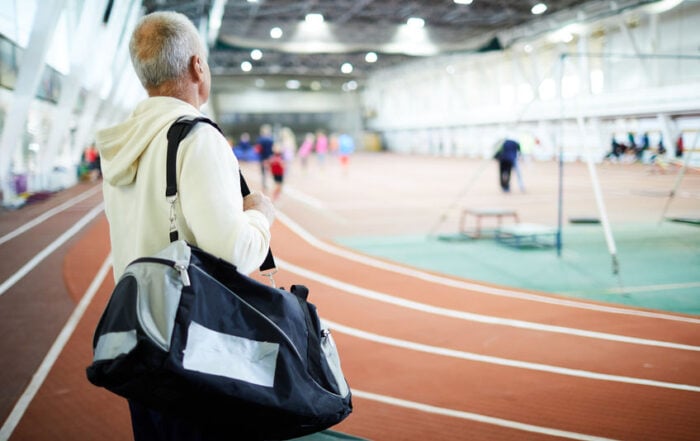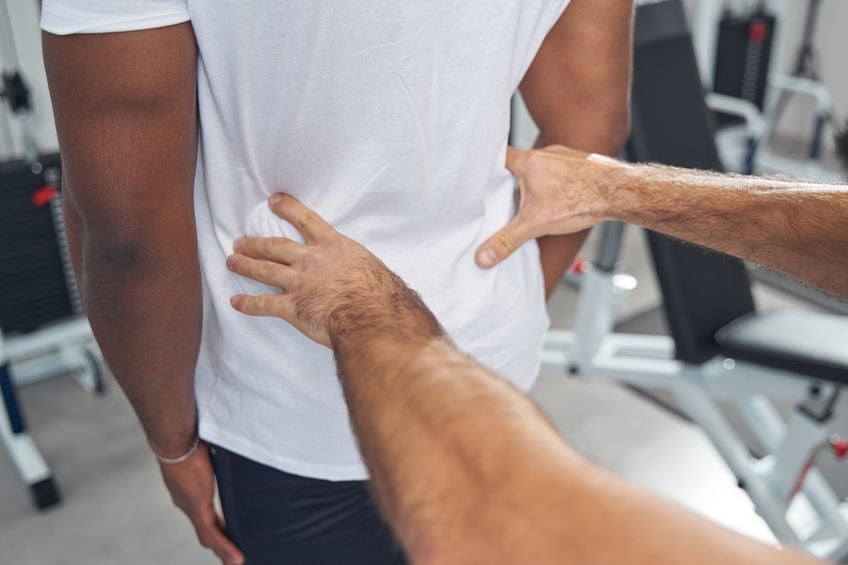More Than Your Weak Spot
In Greek mythology, the heel was the one weak spot of the greatest warrior, Achilles. An arrow pierced what is now known to be the Achilles tendon, effectively ending Achilles’ reign. To date, an Achilles tendon is one of the most serious and feared injuries. That’s because the Achilles tendon is the largest, strongest, and thickest of the body. Recovering from a tear is lengthy and can even impair future movement. That’s why even inflammation of the Achilles must be taken seriously.

A powerful tendon
The Achilles is a thick tendon that connects the calf muscle to the heel bone. At almost 6 inches long, this tendon is critical for movement. The tendon acts as the body’s shock absorber and spring, known to withstand forces of up to 10 times bodyweight. Without the Achilles, walking, jumping, heavy lifting, and even standing on the toes is impossible.
The dreaded torn Achilles
Along with an ACL tear, an Achilles tendon rupture is one of the most feared athletic injuries. An Achilles rupture happens when there is a partial or complete tear of the tendon. Tears happen near the heel bone, where the tendon is weakest and has the least blood flow. Injuries usually occur during jumping or twisting motions in sports. However, age, obesity, use of high heels, and increased corticosteroid use are other risk factors.
Is it a tear or just inflammation?
Before an Achilles tear, many athletes, and even sedentary persons, can have an inflamed tendon. Inflammation is quite common and normal after intense exercise or sports. Persons with the injury will generally feel slight pain on the heel, stiffness, and soreness. The pain and soreness increase with simple activities such as walking or running. On the other hand, a tear brings swelling and an inability to stand or press on the injured leg. The tear often feels like someone kicked the back of the calf. Most cases of Achilles pain is linked to inflammation. However, inflammation could also be a sign of a weakened tendon. Use these steps to treat inflammation and prevent a future tear.
Apply the RICE formula
RICE is a common acronym in the physical therapy space. For most ligament injuries, a combination of rest, ice, compression, and elevation can help. Achilles inflammation happens after high-intensity sports or exercise. Furthermore, tears happen if there is insufficient rest between games or sessions. Make sure to elevate the leg and use ice packs to soothe muscles. Compression garments can also help during rest. Giving the tendon the rest needed to recover significantly decreases the chances of a tear.
Focus on the calf muscle
The Achilles tendon is connected to the calf muscles. Even with inflammation, by strengthening the muscles, the Achilles will be able to withstand more stress. More exercise may reduce the chances of a tear. Focus on a workout regimen that includes calf exercises. Furthermore, make sure to stretch the calf muscles before and after activity to prevent injury.
Ease back in
By jumping into new, intense sports or exercises, the ligament can easily tear. Make sure to keep a steady pace with any recent activity. Gradually increase the intensity to reduce the stress on the ligament. If pain or inflammation happens during the activity, stop immediately, and apply the RICE technique.
Protect your Achilles tendon at all costs
While the Achilles is a strong tendon, some persons are particularly prone to injury. Make sure to identify the signs of inflammation and take action. Rest, stretching, and the right exercise can prevent a tear in the future. For symptoms of inflammation or a tear, see a healthcare provider for more guidance and support.
Can Lower Back Pain Return After Spinal Surgery? 3 Lifestyle Changes To Get The Most Out Of Fusion
Minnesota Valley Valley Center2024-04-02T14:49:38-05:00April 15th, 2024|
Spinal surgery is an excellent solution for lower back pain, but symptoms can return. With lifestyle changes, patients can get the most out of fusion.
A New Lease On Life: Exploring How Robotic Total Joint Replacement Can Get You Active Again
Minnesota Valley Valley Center2024-03-24T17:38:47-05:00March 29th, 2024|
Robotic total joint replacement uses a robotic arm to replace the joint. This innovative approach allows a quick return to activities.
Restoring Dexterity: How Outpatient Carpal Tunnel Surgery Can Change Your Life
Minnesota Valley Valley Center2024-03-24T17:38:37-05:00March 15th, 2024|
After months of wrist and hand pain, carpal tunnel surgery may be needed. With outpatient options, restored dexterity with less pain and discomfort is possible.
More Articles from MVSC
January 30, 2024
There are many options for hip arthritis before surgery. These options include physical activity, lifestyle modifications, and medications.
December 28, 2023
Most doctors prefer to avoid spinal surgery if possible. With epidural spinal injections, patients can experience long-term pain relief.
November 7, 2023
Sacroiliac joint pain can be alleviated through radiofrequency ablation, which uses radiofrequency signals to disrupt pain signals in nerves.
September 5, 2023
Tennis elbow is a common but painful chronic condition affecting the arm. For some people struggling, elbow arthroscopy may be the answer.










